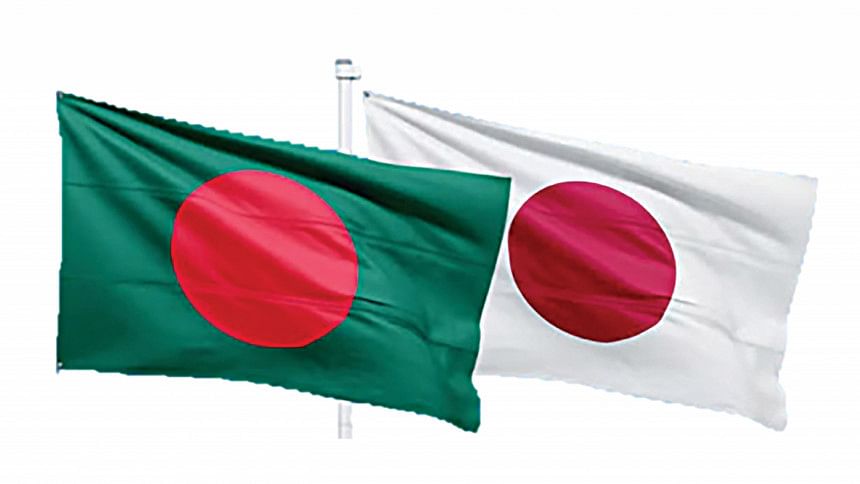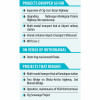Govt gets down to signing trade pact with Japan

Both Bangladesh and Japan have begun negotiating the terms and conditions of a joint feasibility study in order to prepare the ground for signing a free trade agreement by 2025, officials said.
During Prime Minister Sheikh Hasina's visit to Japan last month, eight memoranda of understanding (MoU) were struck by the two sides. One MoU is aimed at agreeing to ink the FTA, said Senior Commerce Secretary Tapan Kanti Ghosh over the phone.
A two-member delegation from Bangladesh also held a meeting with the senior officials of Japan in Tokyo last month.
A back-to-back meeting of the negotiators will be held in Dhaka soon, the senior secretary said.
"Our target is to sign the FTA with Japan by the end of 2025 or in early 2026."
Our target is to sign the FTA with Japan by the end of 2025 or in early 2026.
Bangladesh has got down to signing trade agreements with trading partners in order to retain duty-free export benefits after it graduates from the group of the least-developed countries (LDCs) to a developing nation in 2026.
In December 2020, the country signed a preferential trade agreement with Bhutan, its first-ever bilateral trade agreement.
Depending on the outcome of the negotiation, the trade pact with Japan will be in the form of FTA, Economic Partnership Agreement (EPA) or Comprehensive Economic and Trade Agreement (CETA), Ghosh said earlier.
Most Japanese companies doing business in Bangladesh want Tokyo to pen an FTA with Bangladesh since they are expanding their footprint here and raising investments to grab a significant share in a market of 17 crore consumers.
Bangladesh is expected to be the ninth-largest consumer market globally by 2030, leaving behind the United Kingdom and Germany, said a report by HSBC Global Research.
A survey in June last year carried out by the Japan External Trade Organisation (Jetro) showed that 85 per cent of local and Japanese companies with operations in both nations want their respective governments to strike FTA so that they can continue enjoying duty benefits after Bangladesh becomes a developing nation.
An FTA is an agreement in which two or more countries agree to provide preferential trade terms, tariff concession and other benefits to the partner country. A negative list of products and services is maintained by the countries on which the terms of FTA are not applicable.
The Jetro survey showed 20 per cent of companies may even relocate from Bangladesh to more competitive destinations in Southeast Asia if no FTA is signed.
Of the respondents among the local companies, 87 per cent have sought an FTA between the two countries.
Japan is the only Asian nation where the export of goods from Bangladesh crossed the $1-billion mark for the first time since 2012 on the back of increased garment shipments, which account for 95 per cent of the earnings.
Local garment exporters have targeted to ship $10 billion worth of garment items to Japan by 2030 and are drawing up strategies in a bid to elevate sales in the growing Asian market in general and in Japan in particular.
Trade ties between Japan and Bangladesh have deepened over the decades.
The number of Japanese companies operating in Bangladesh has tripled over the last decade, reaching 338 in 2022.
In December, the Japanese Special Economic Zone at Araihazar of Nayaranganj was inaugurated to attract more investments from the world's third-largest economy.
According to the foreign affairs ministry of Japan, the nation currently has 21 operational FTAs or EPAs.
Some local companies say the country would lose its competitiveness in the absence of a generalised system of preferences (GSP) facility in comparison to the countries that have signed FTAs with Japan.
The tariff will go up from 7.4 per cent to 10.9 per cent on garment exports to Japan if the GSP expires, the survey said.
Bangladesh shipped goods worth $1.35 billion to Japan in the last fiscal year, up 14.40 per cent year-on-year, according to data from the Export Promotion Bureau. Of the sum, $1.10 billion came from apparel shipments.
The shipment of garment items started leapfrogging in April 2011, when Japan relaxed its Rules of Origin for the LDCs and for the knitwear sector.
According to the findings of the Jetro survey, the existing RoO in the GSP for garment products should be continued.

 For all latest news, follow The Daily Star's Google News channel.
For all latest news, follow The Daily Star's Google News channel. 








Comments